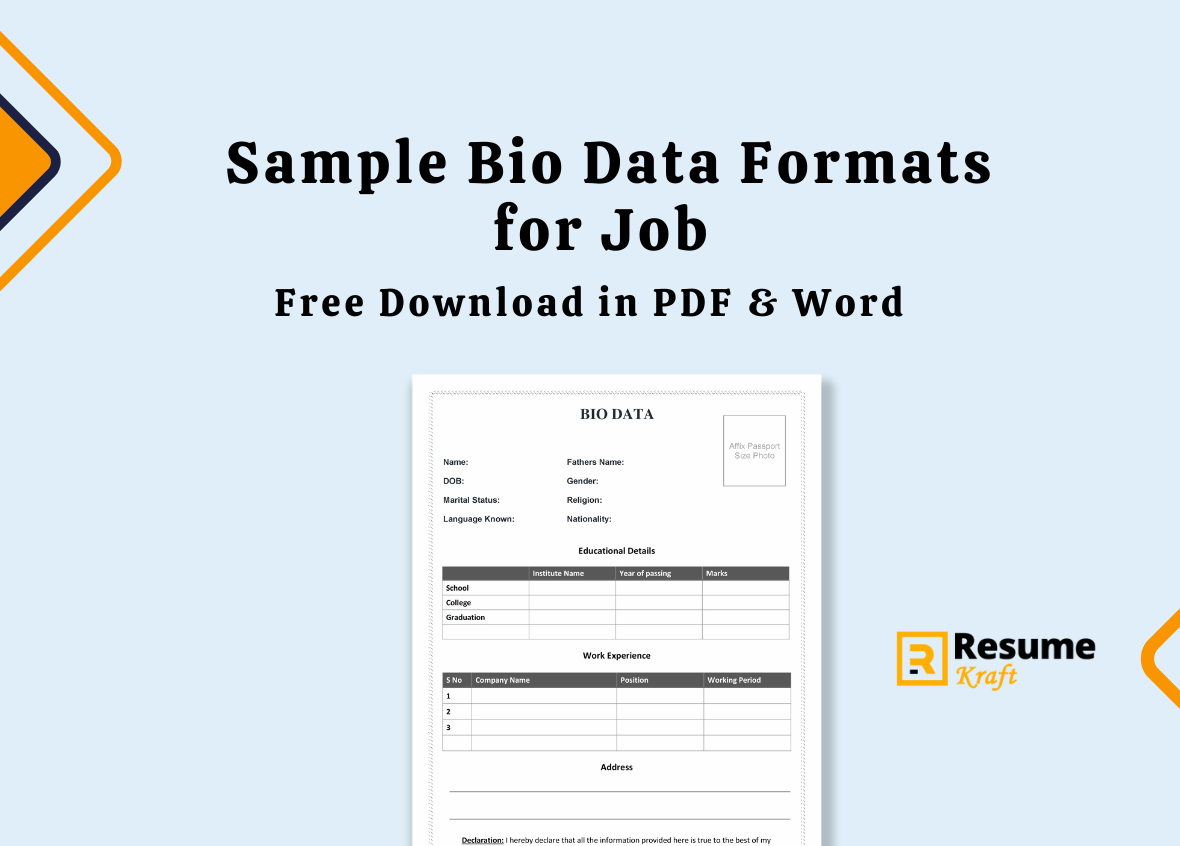
Looking for the perfect biodata format for your job application? Download our collection of 42+ sample biodata formats for job PDF & Word. From simple and concise layouts to more detailed formats, these templates are designed to highlight your qualifications and experience effectively. Impress potential employers with a professional biodata format that stands out.
Get ready to impress potential employers with our collection of simple biodata formats for job applications. Whether you’re a fresher or an experienced professional, these biodata formats are designed to showcase your qualifications and experience in a concise and effective manner.
Bio data, a term often used in the context of job applications, is a concise document that outlines an individual’s basic and personal details, educational qualifications, and work experience. This document serves as a snapshot of the candidate, providing potential employers with essential information at a glance.
In this article, we provide a range of biodata formats in both PDF and Word document formats, making it easy for you to customize and download the format that suits your needs. From simple and straightforward formats to more detailed ones, you’ll find a variety of options to choose from.
We also explain the importance of biodata in job applications and provide a step-by-step guide on how to create a compelling biodata format using PDF, MS Word or Google Docs. Additionally, we highlight tips to make your biodata stand out and discuss the differences between biodata, resume, and CV.
Don’t miss out on this valuable resource that can help you make a strong impression on potential employers. Download our collection of sample biodata formats for job applications now and take a step closer to your dream job!
What is a Biodata Format?
A biodata format is a structured template or layout used to present this information. It’s a simple, straightforward document that’s easy to read and understand. Unlike a resume or CV, which can be more detailed and complex, a biodata format focuses on the basics. It’s akin to a quick reference guide that offers a snapshot of the candidate’s personal and professional profile.
The biodata format typically includes sections for:
- Personal Details: This includes the candidate’s full name, date of birth, gender, marital status, and contact information.
- Educational Qualifications: This section outlines the candidate’s academic background, including the degrees obtained, institutions attended, and any honors or awards received.
- Work Experience: Here, the candidate lists their previous employment, including the job title, company name, and duration of employment. It also includes a brief description of roles and responsibilities.
Build your resume in just 5 minutes with AI.
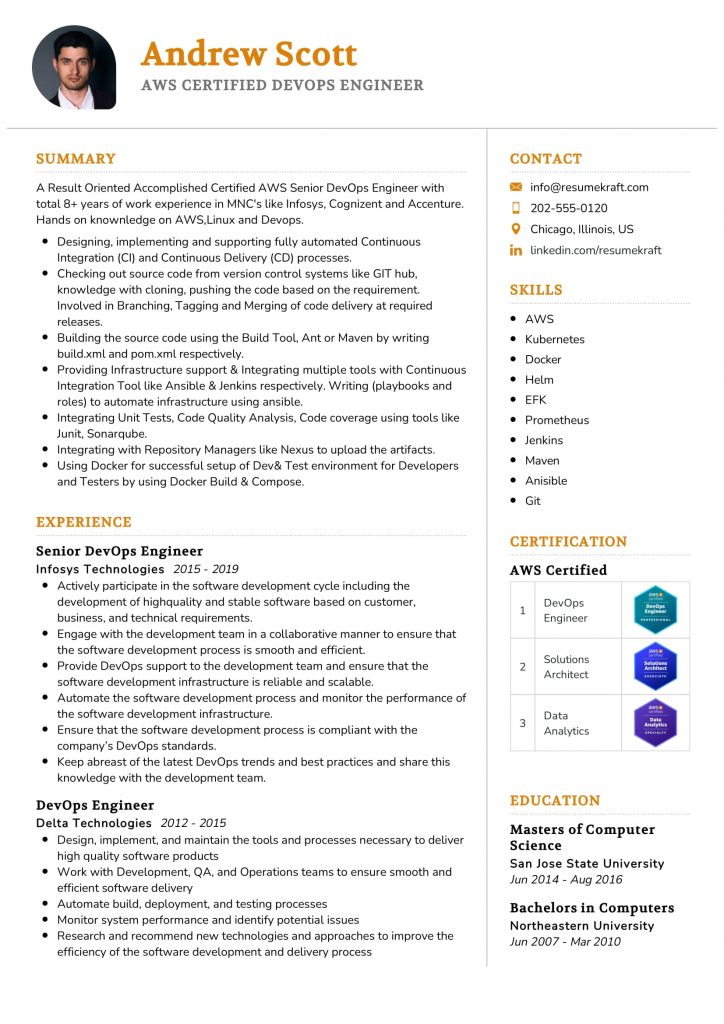
Top 42+ Sample Bio Data Formats for Job applications
There are various biodata formats that one can use when applying for jobs. These formats can vary depending on the job level, industry, and personal preference. Here are the list of 42+ Sample Bio data formats for Job application. Download for free in PDF and Word document file
Biodata Format
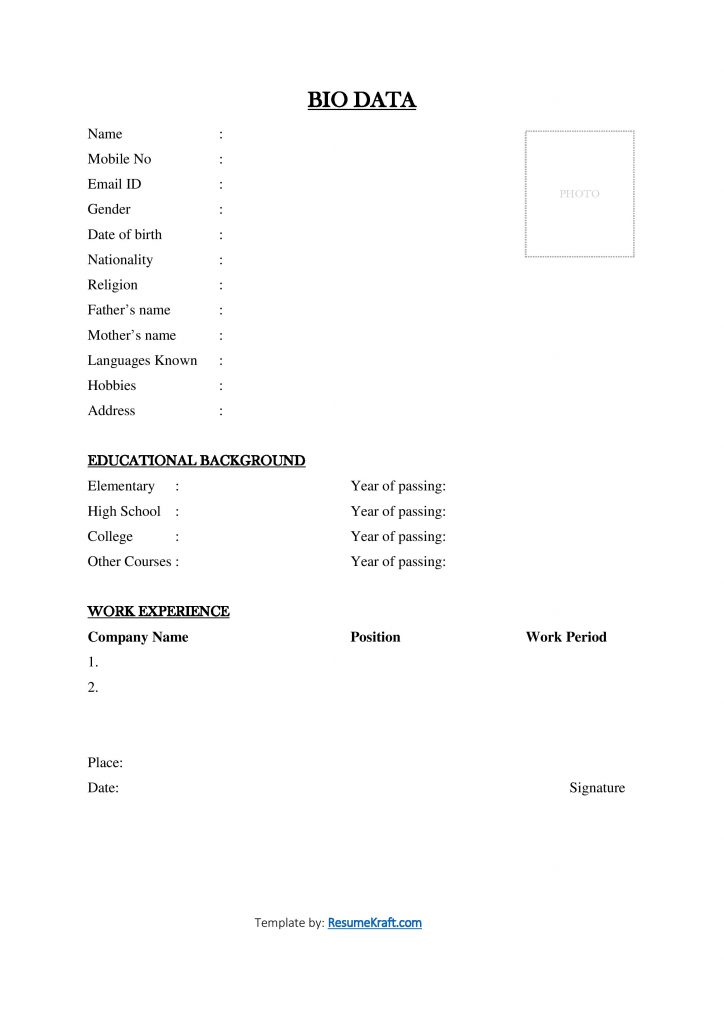
Biodata Printable Format Free Download (Word Document & PDF)
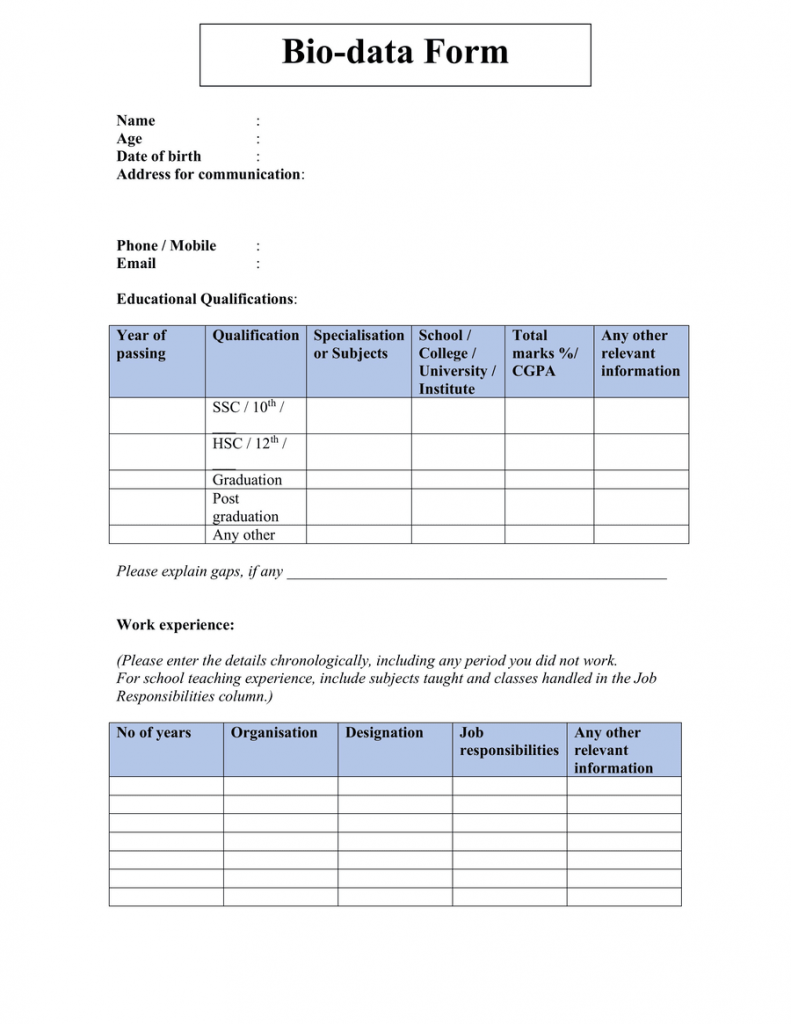
Biodata Fill up Form Free Downloadable in Word and PDF File
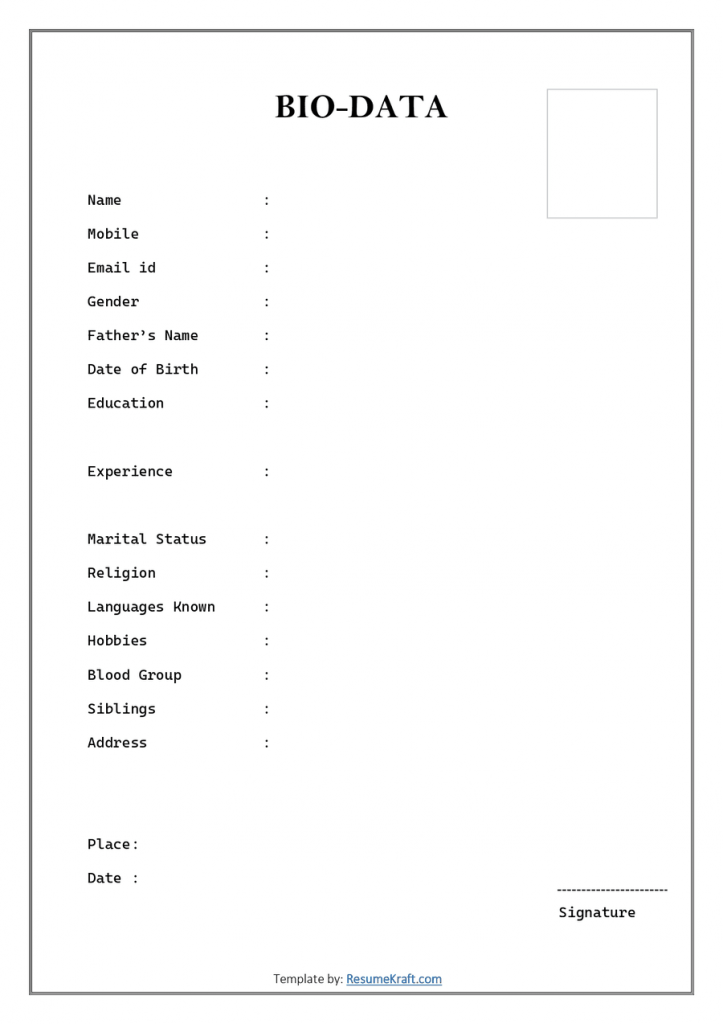
Printable Biodata Form Download Free
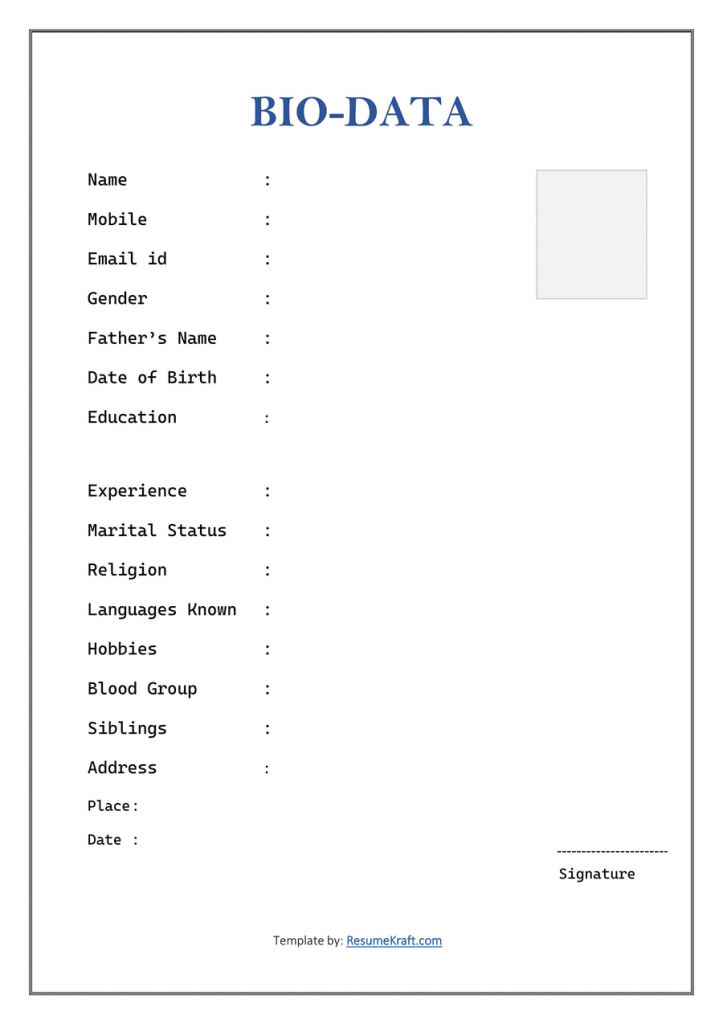
Resume Biodata Form Free Download in Word and PDF File Format
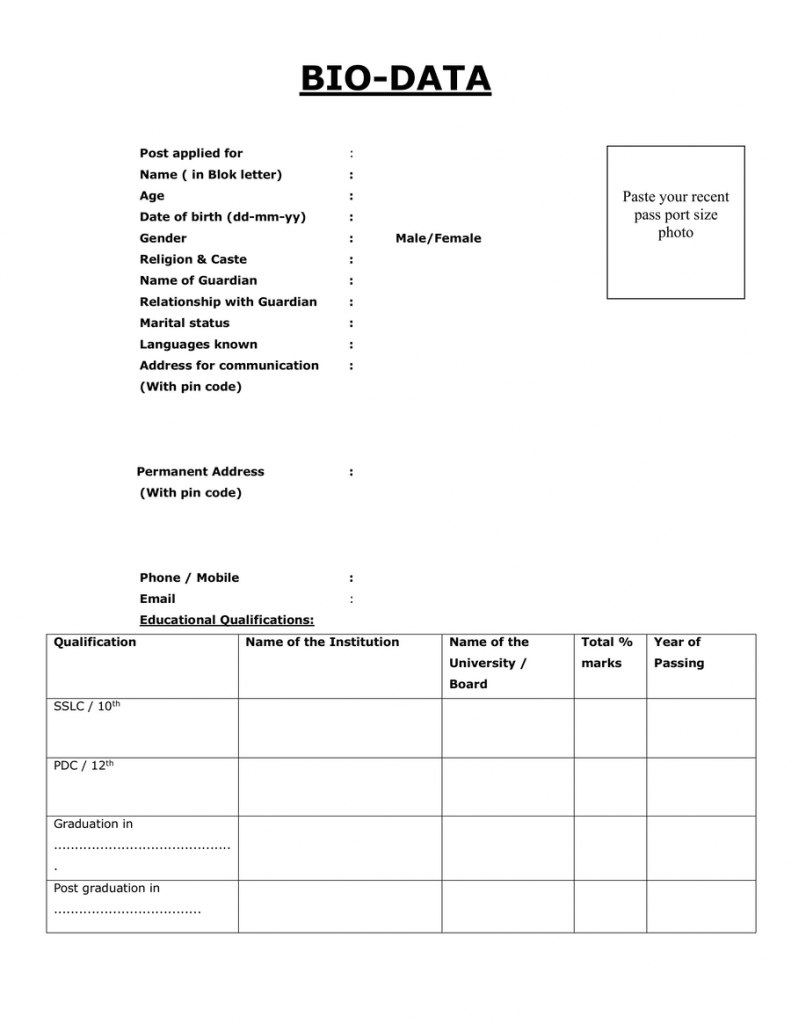
Student Personal Biodata Form
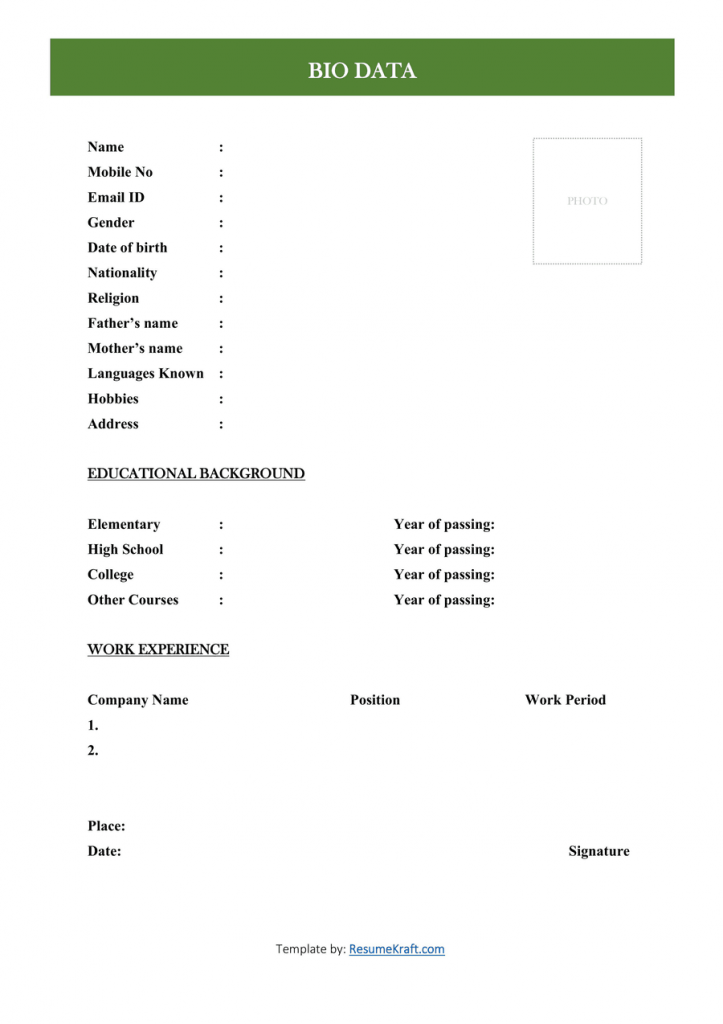
Personal Biodata Form
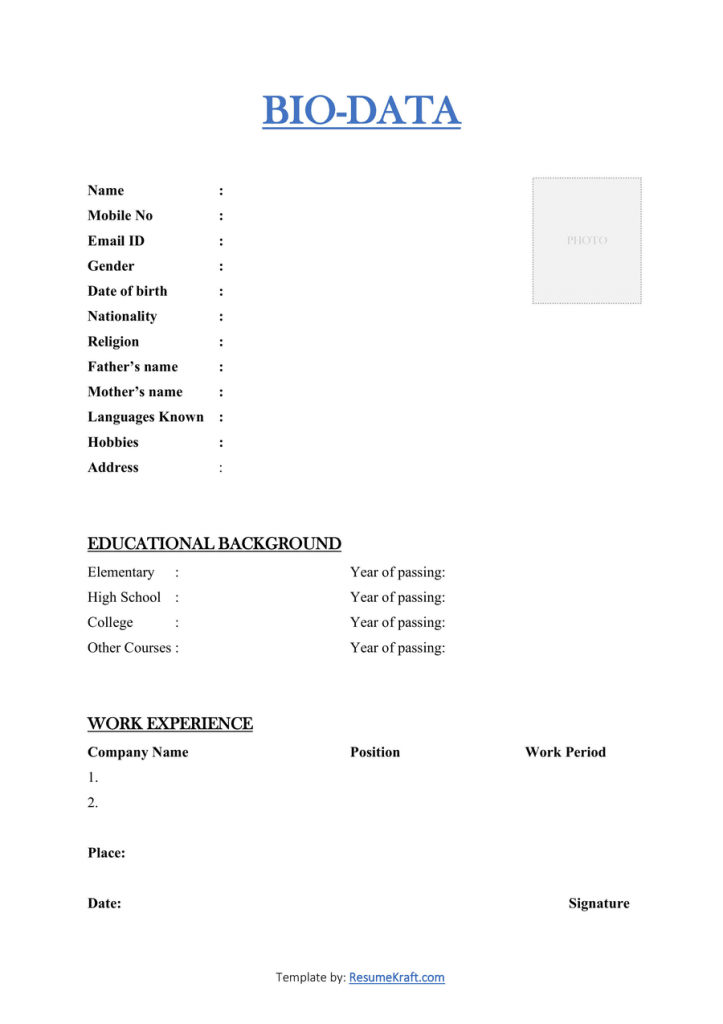
Online Biodata Form Download Free
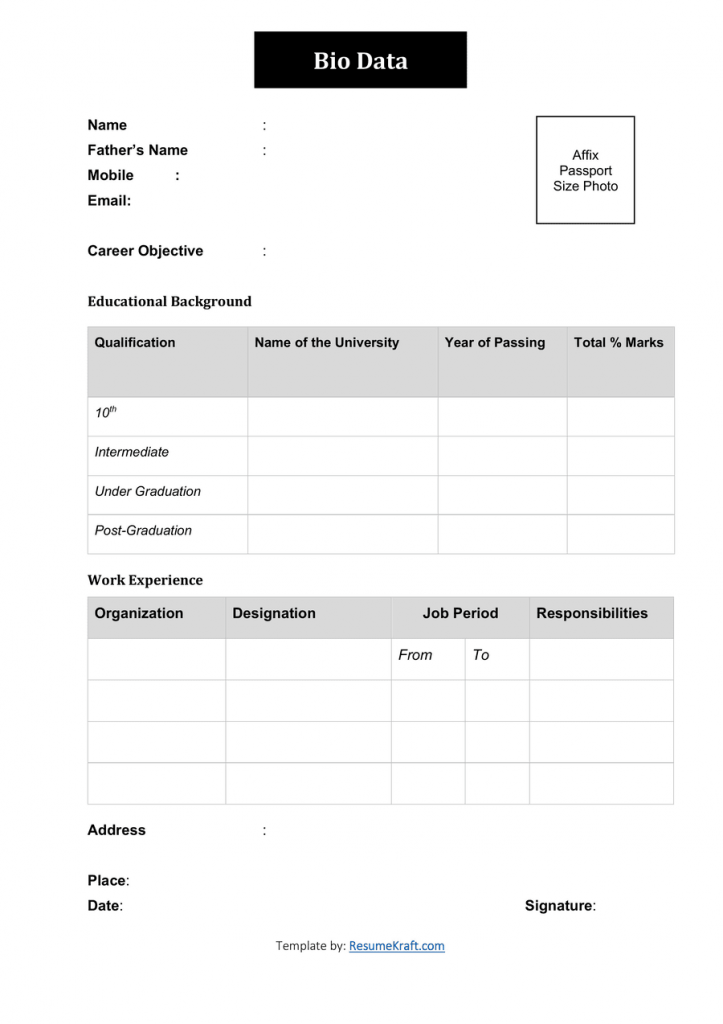
Example of Biodata Form Download Free
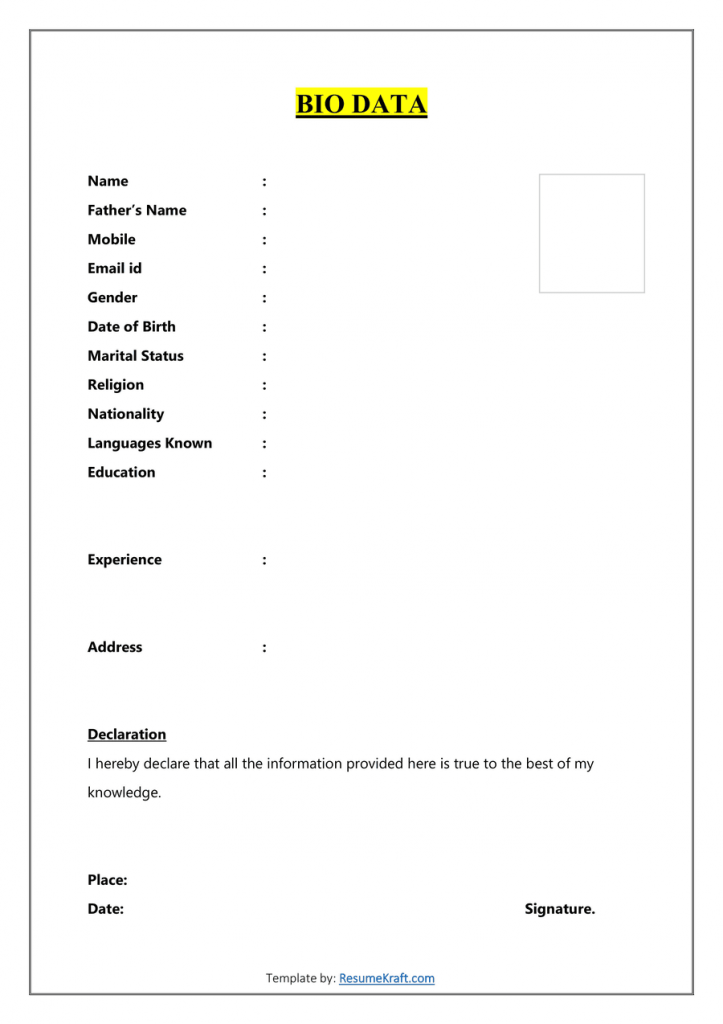
My biodata Form Download Free
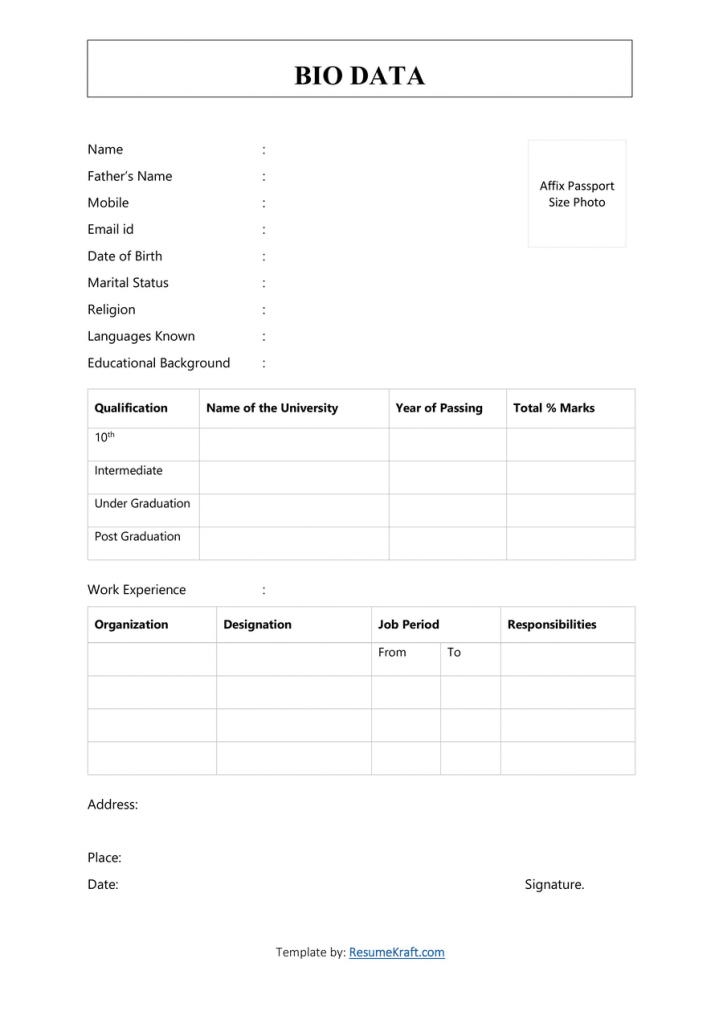
Biodata Form Editable
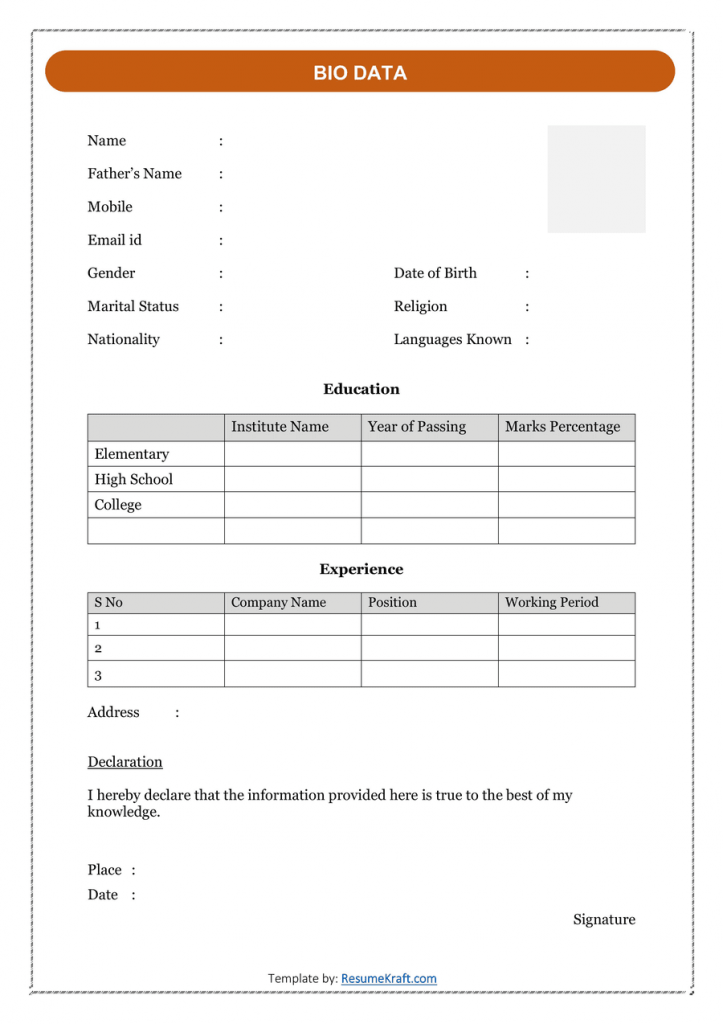
Biodata Application Form
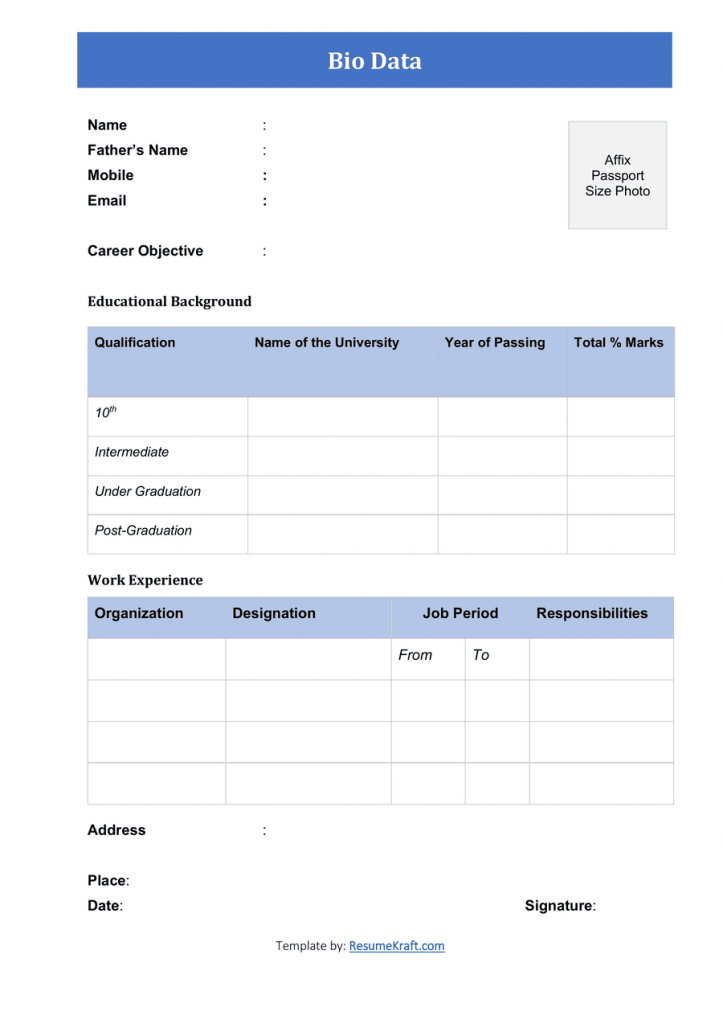
Biodata CV Full Form
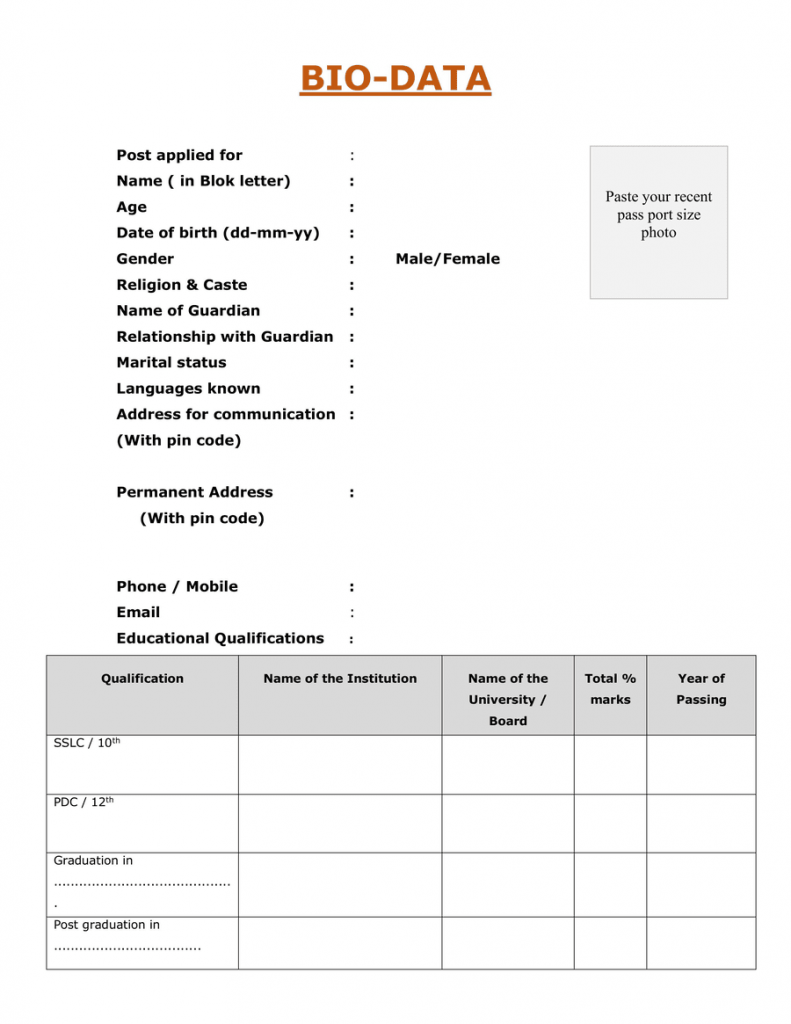
Model Biodata Form Downloadable
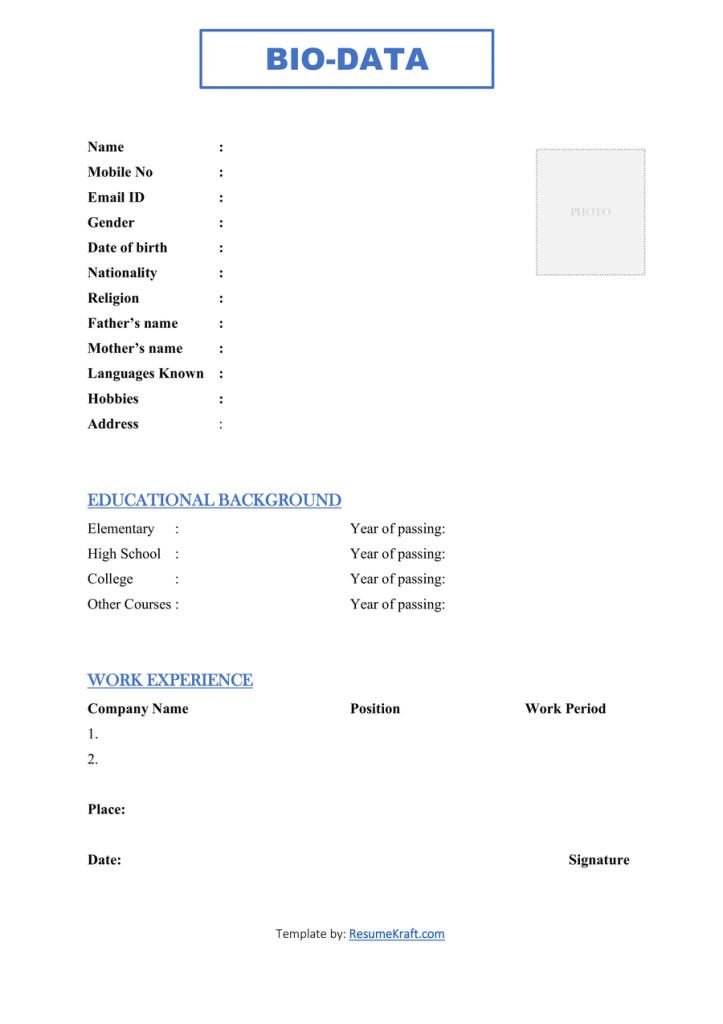
Google Biodata Form Download
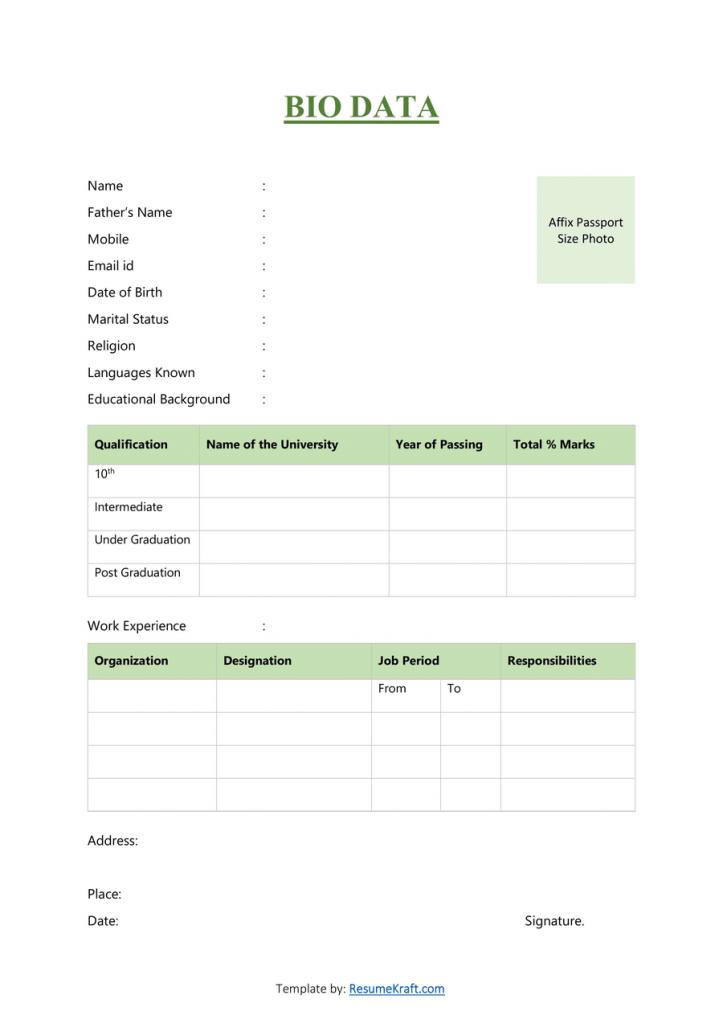
Self Biodata Form Download Free
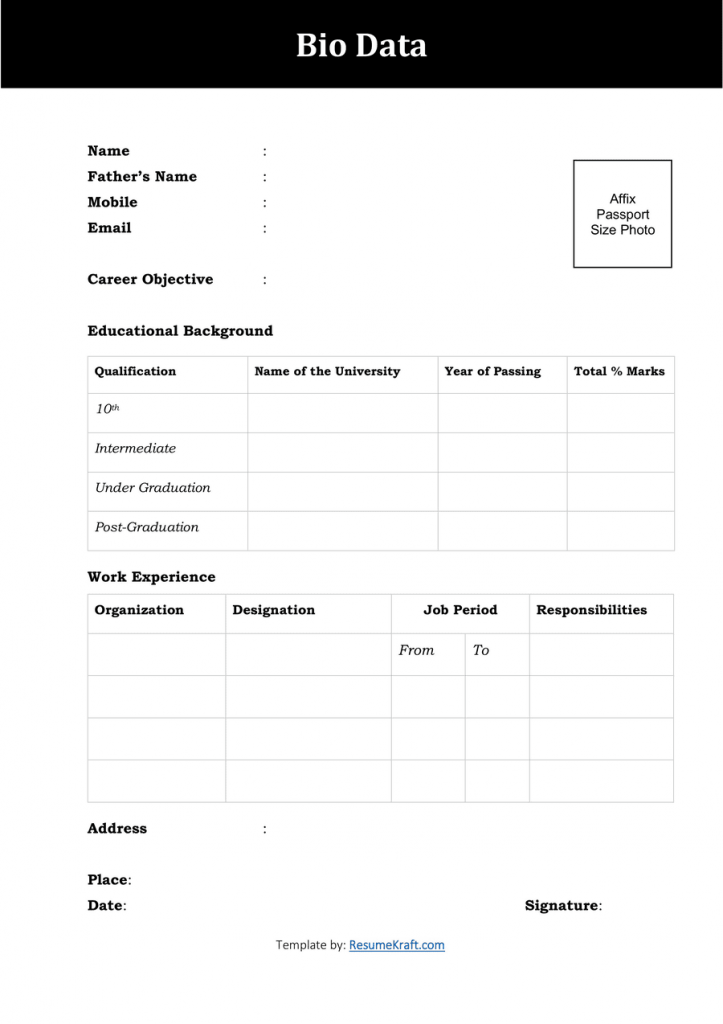
Bank Biodata Form Download Doc
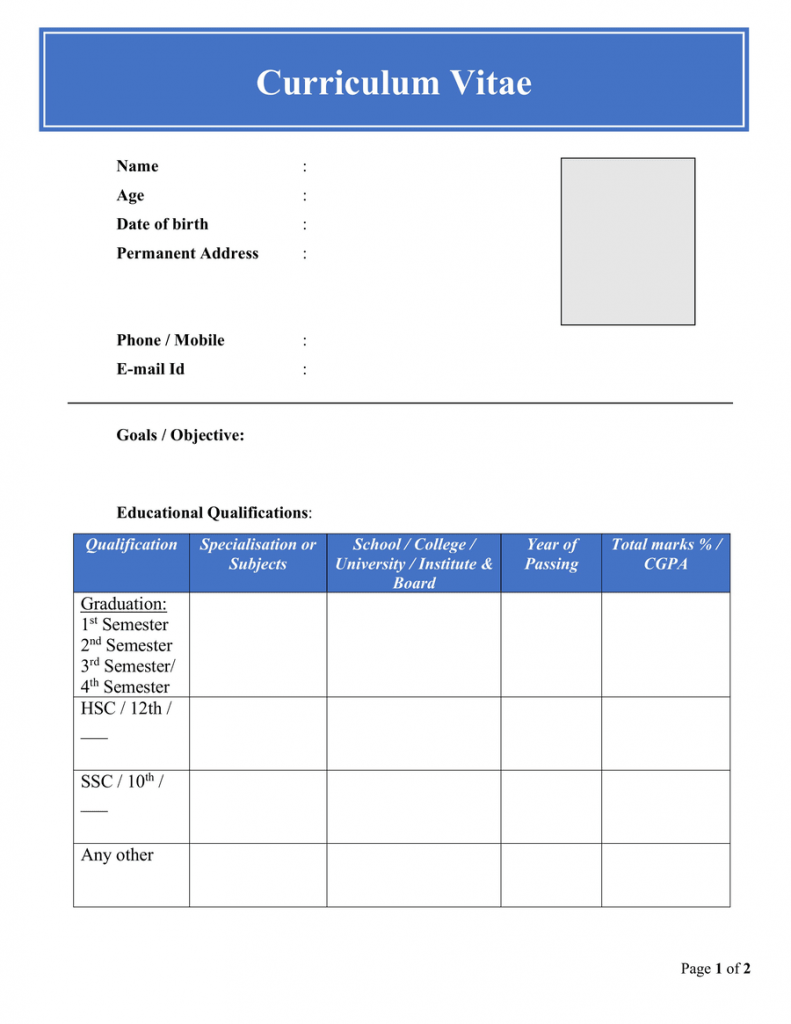
Employee Biodata Form Doc
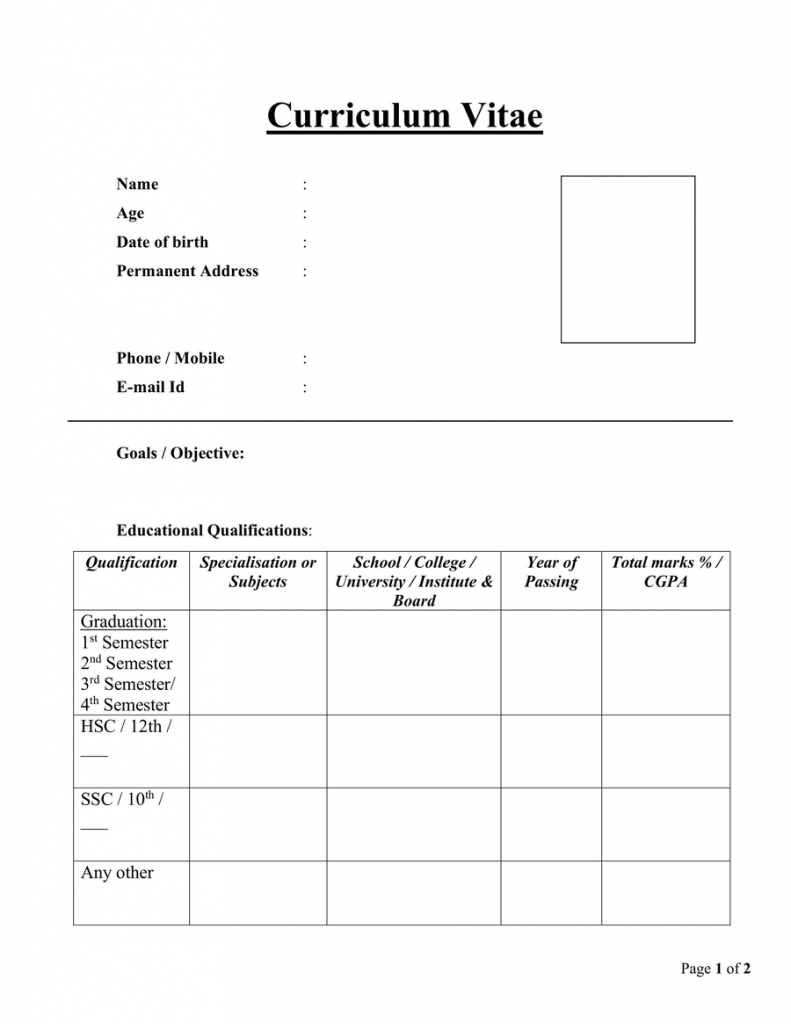
Biodata Form for Students
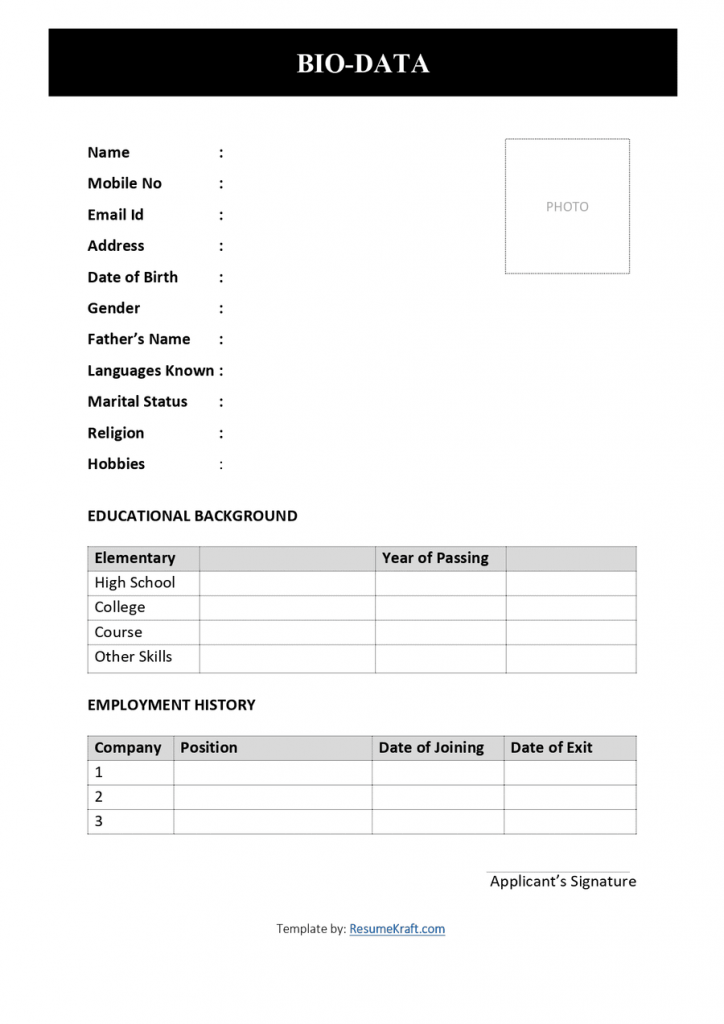
New Biodata Form Download in PDF Document Format
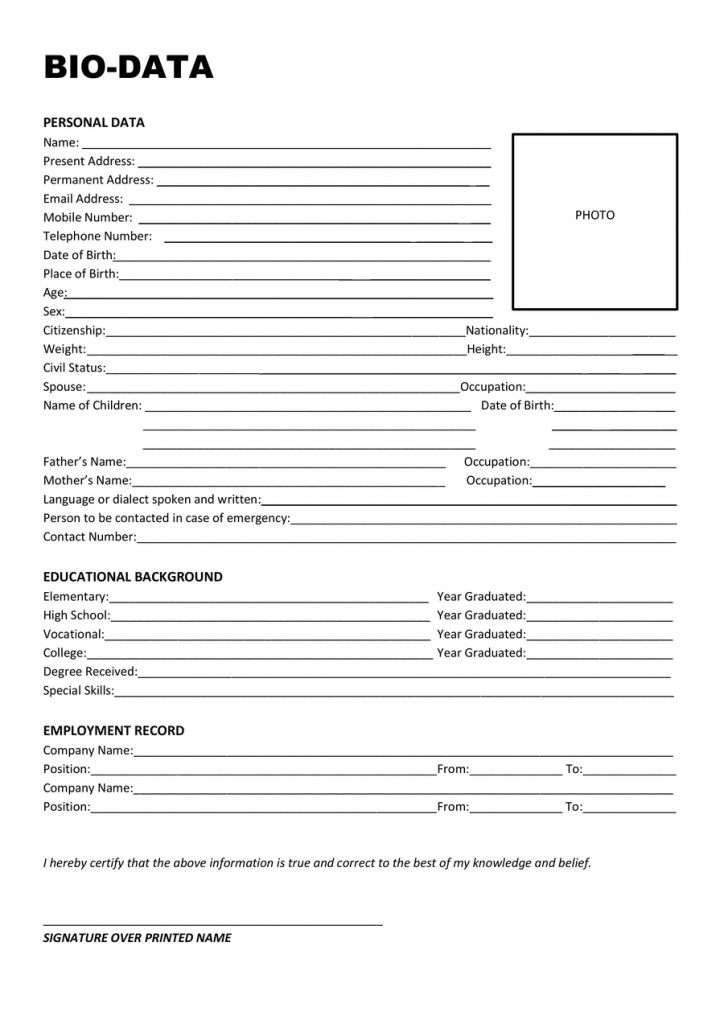
Blank biodata Form
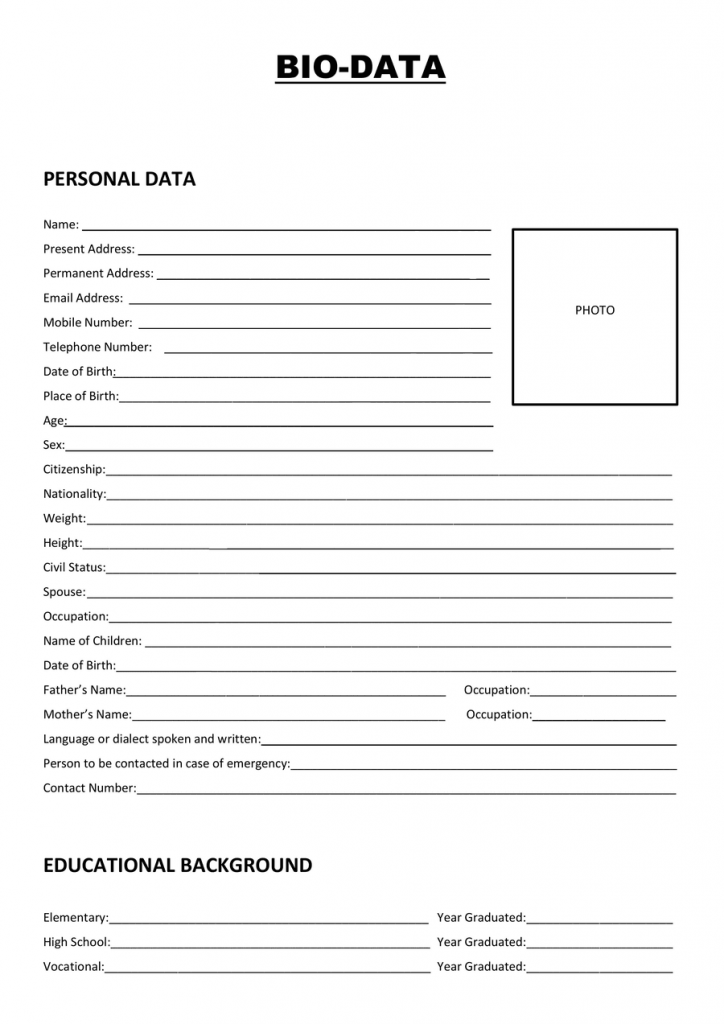
Student Biodata Form – Free Download (Word Doc & PDF)
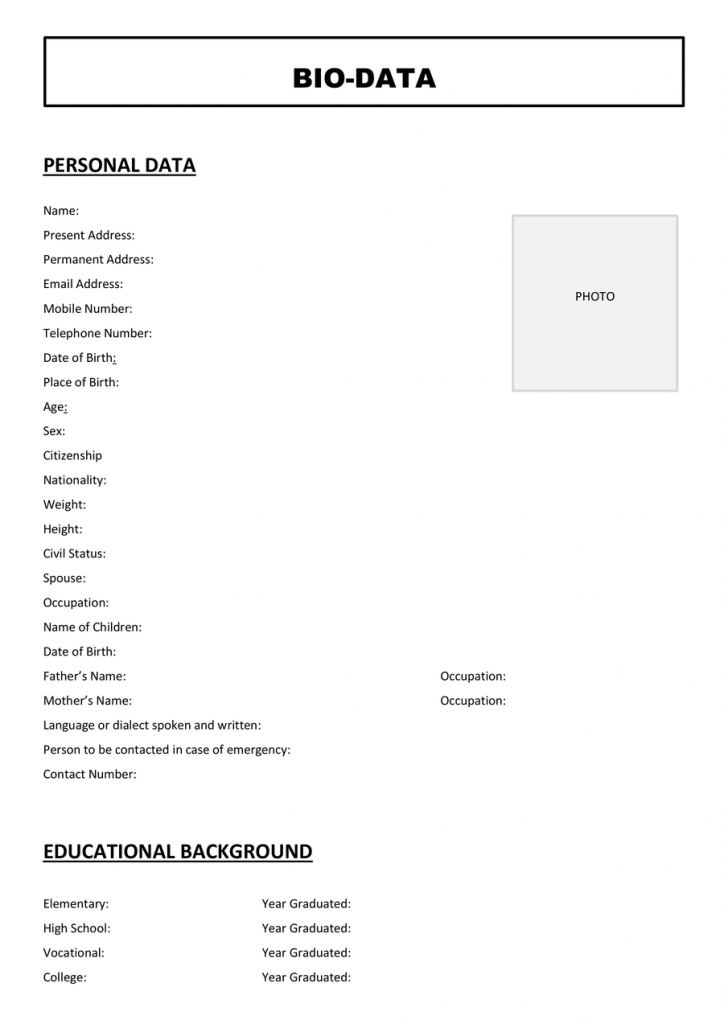
Biodata for Marriage
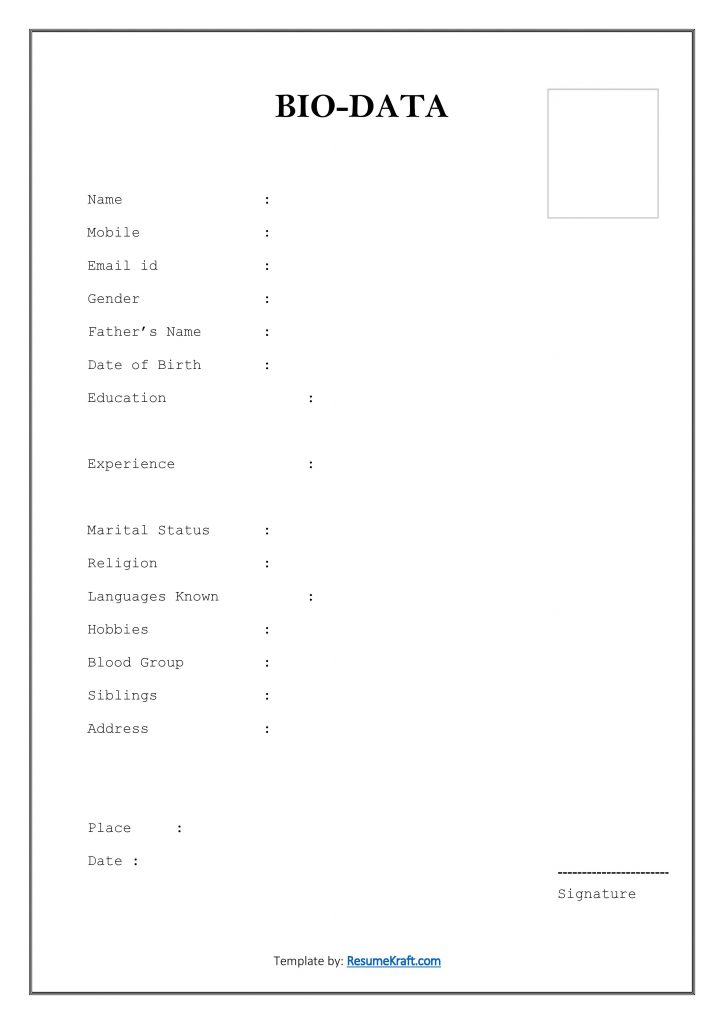
Biodata Format for Job
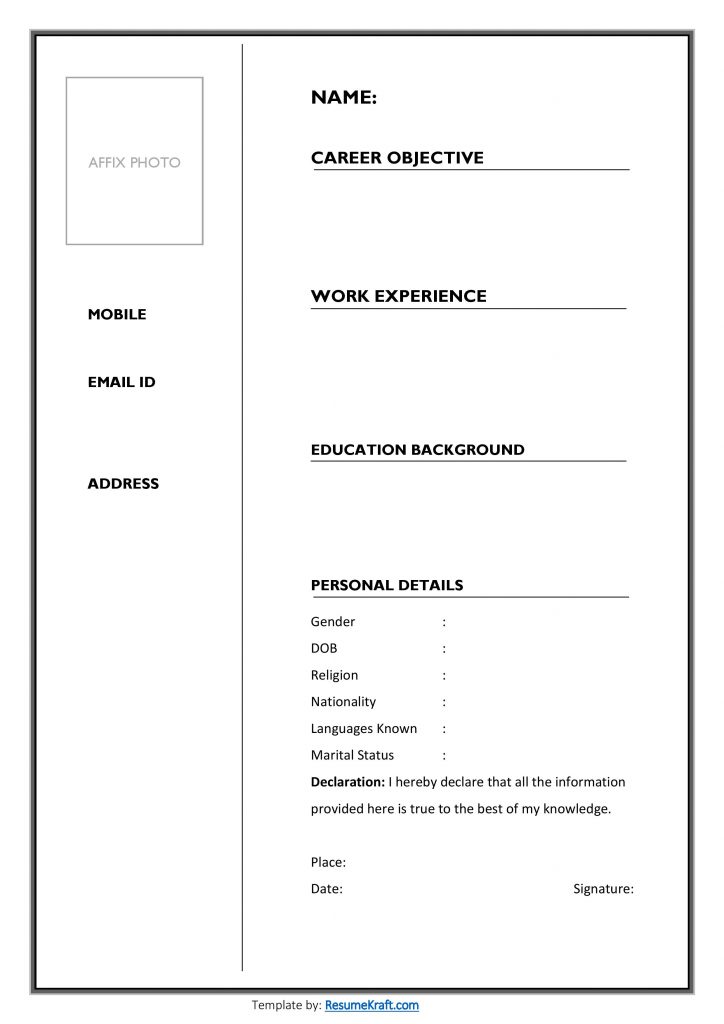
Biodata Format Word
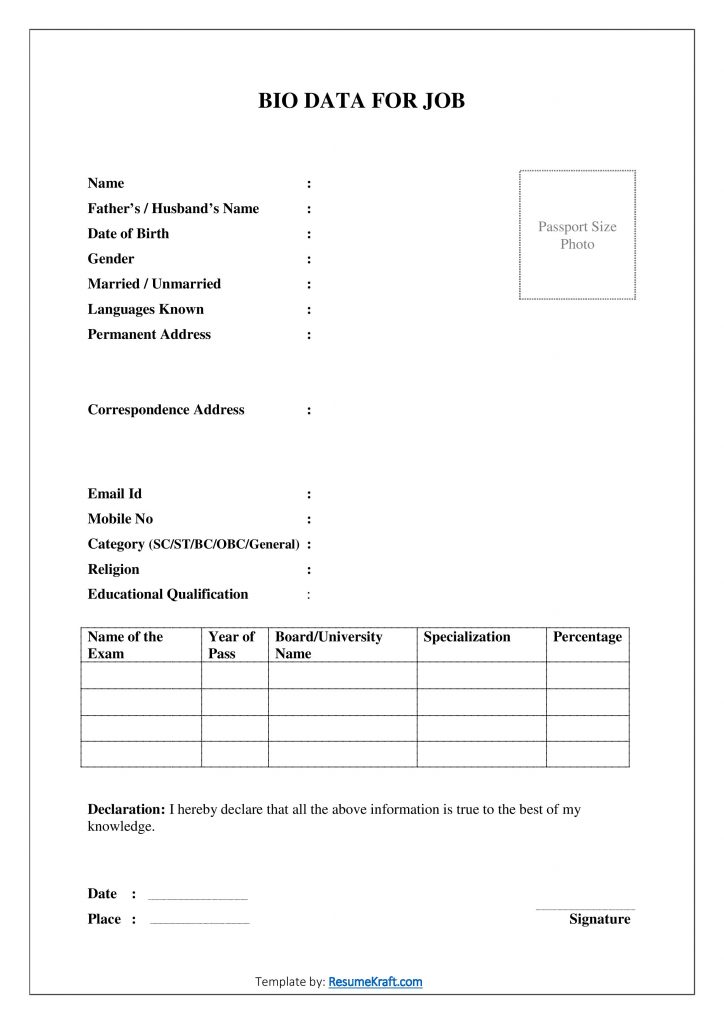
Build your resume in just 5 minutes with AI.

Bio Data Form PDF
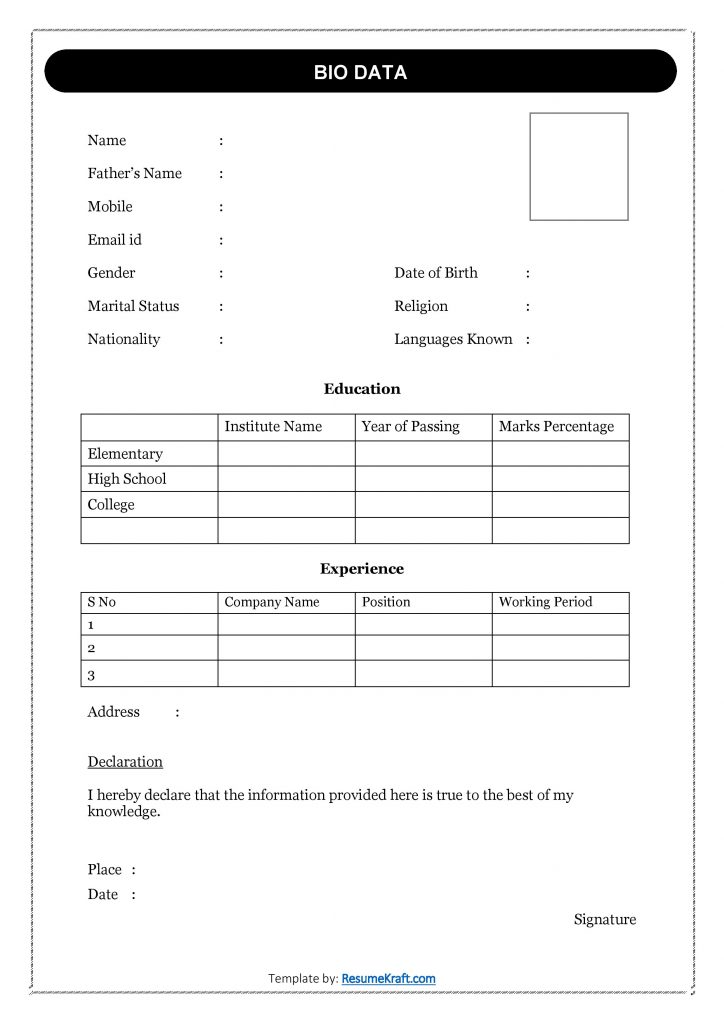
Biodata Format PDF
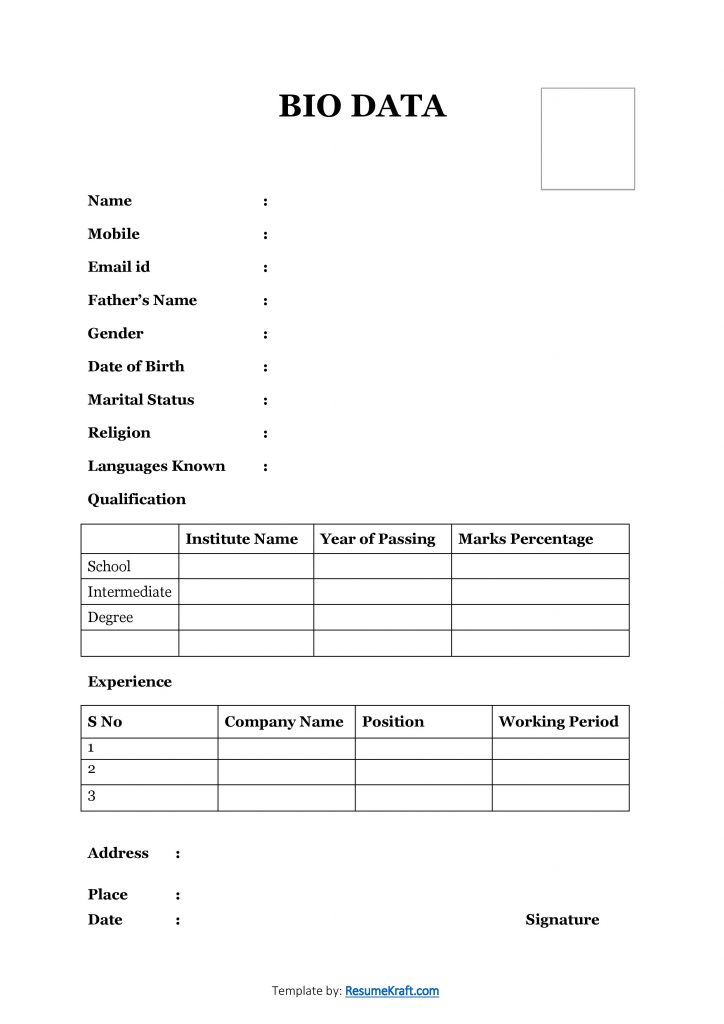
Simple Resume Format in Word
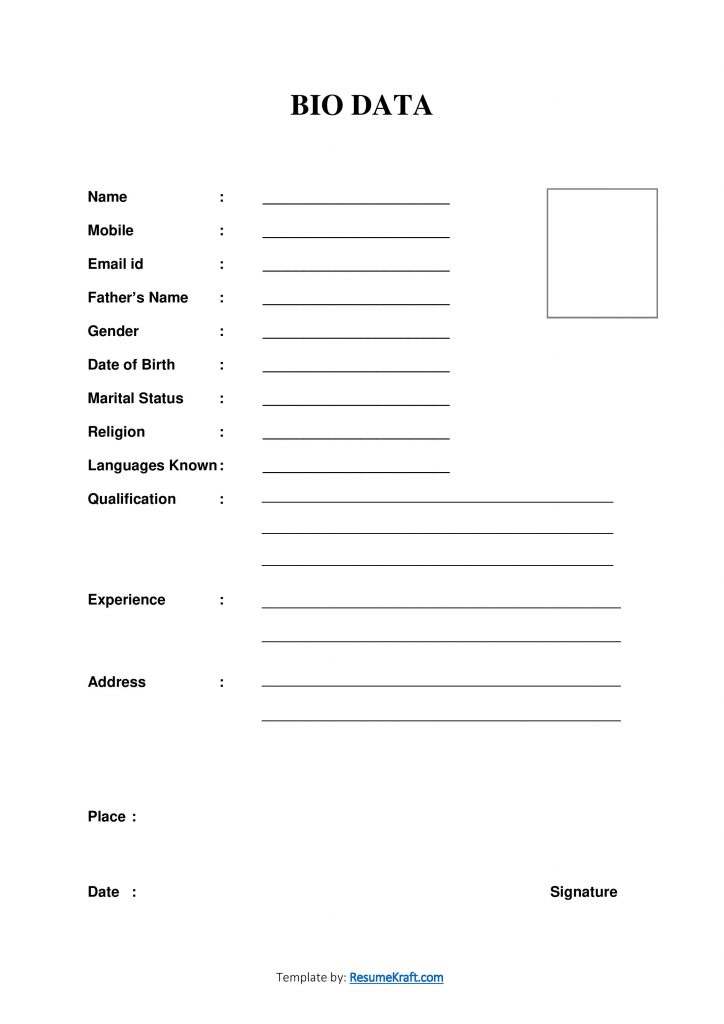
Simple Resume Format Download in MS Word
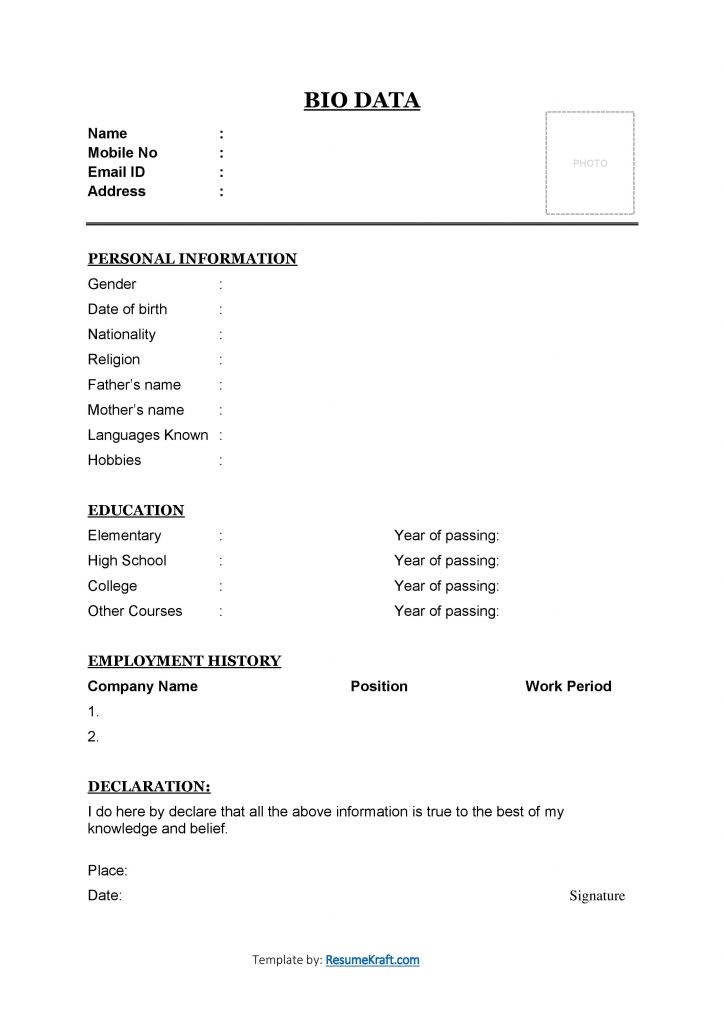
Latest Biodata Format for Marriage Doc

Biodata Sample
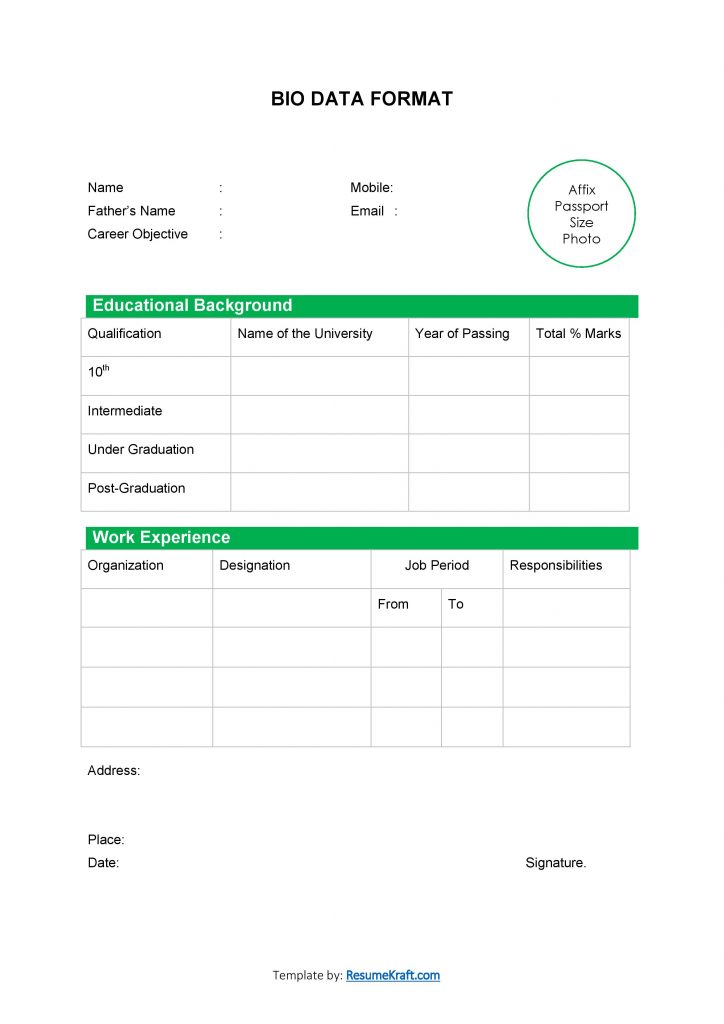
Bio Data Format Download
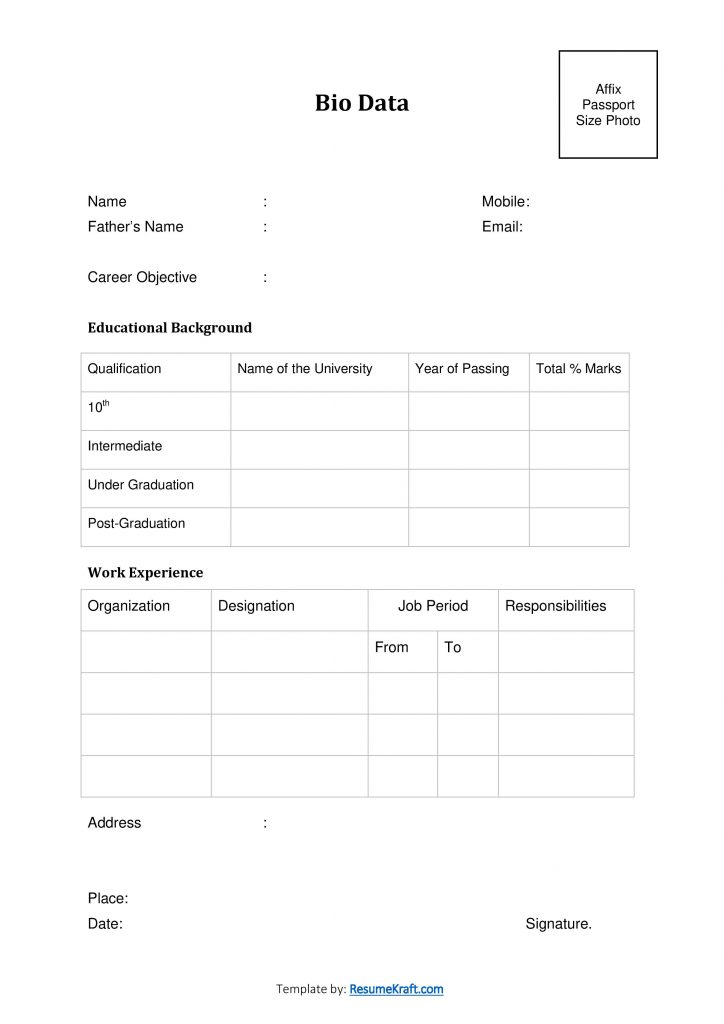
Bio Data Format for Students
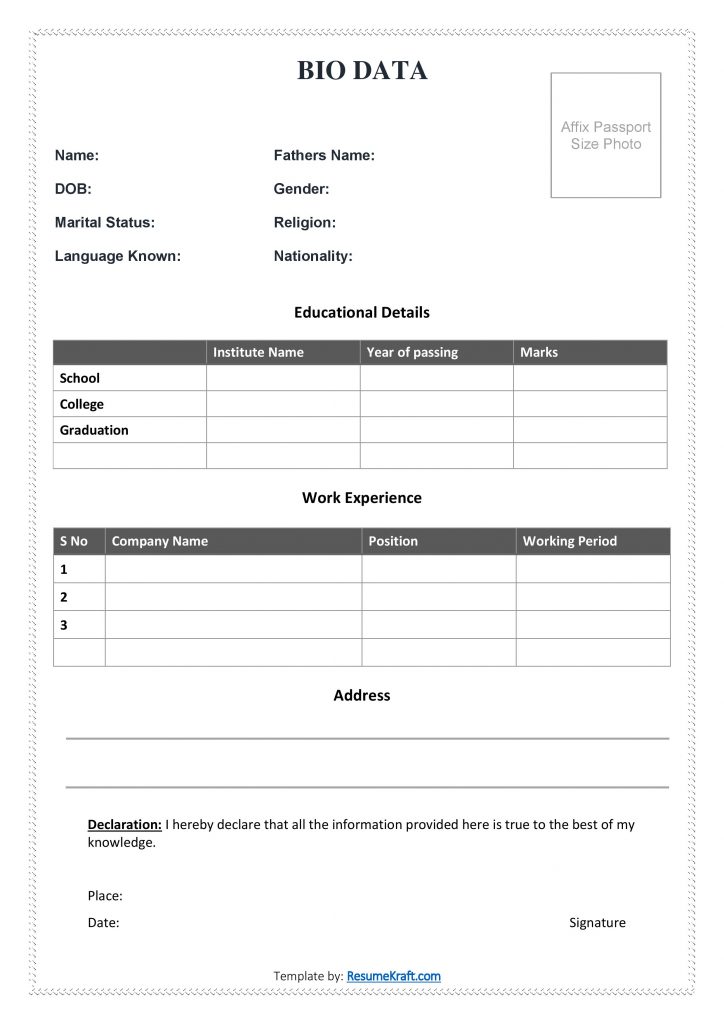
Biodata Format for Job Application
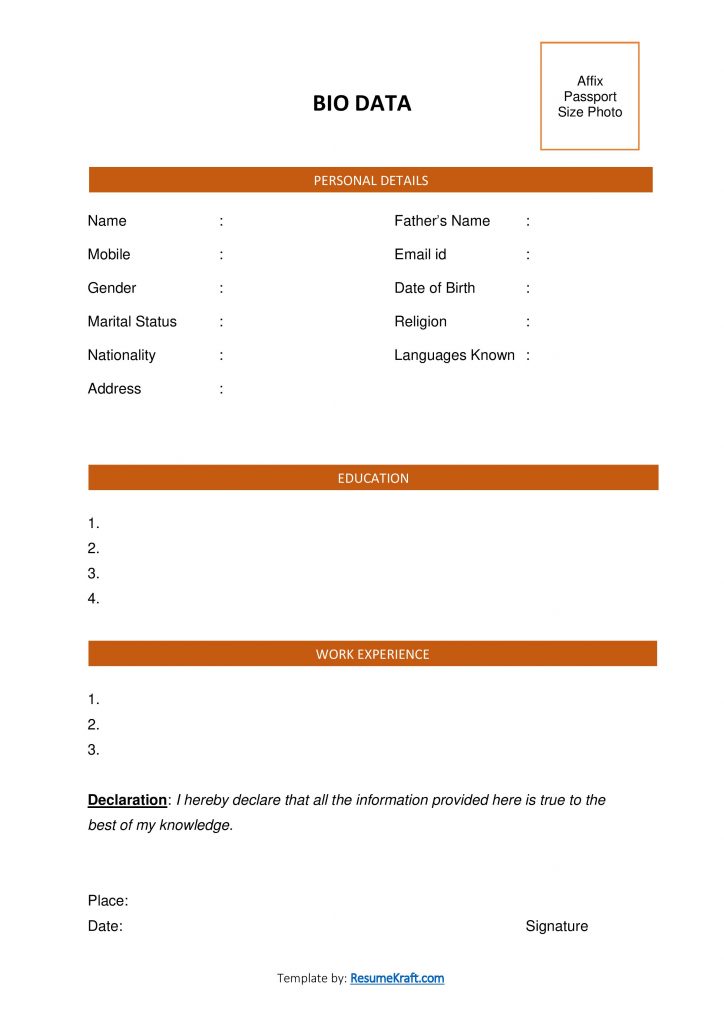
Biodata Model
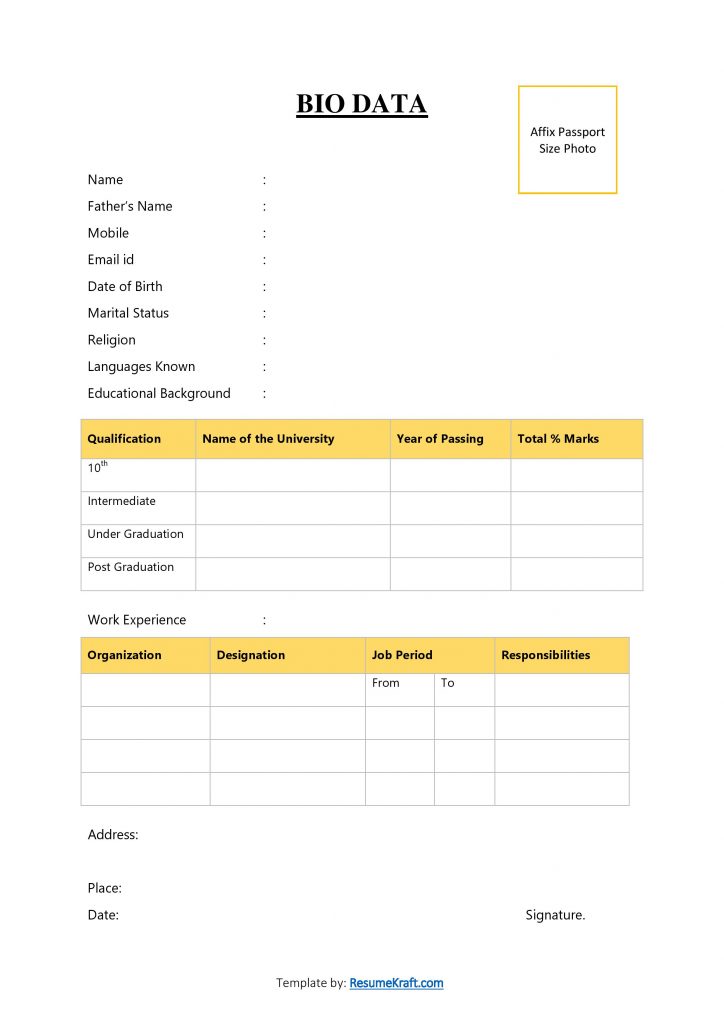
Simple Biodata Format PDF Free Download
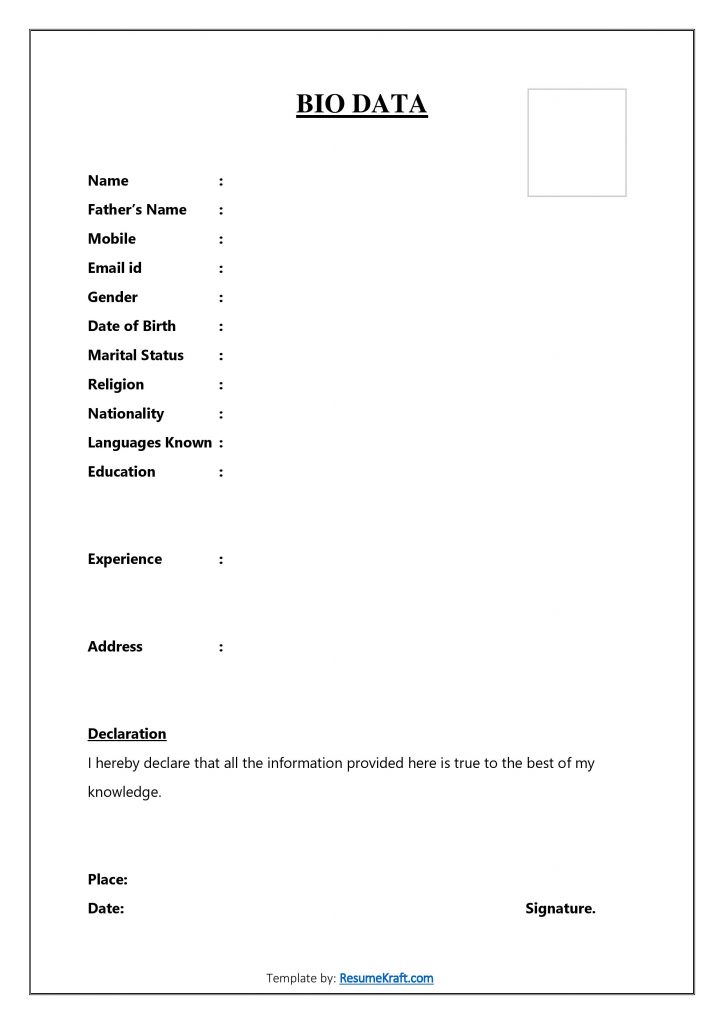
Marriage Biodata Format
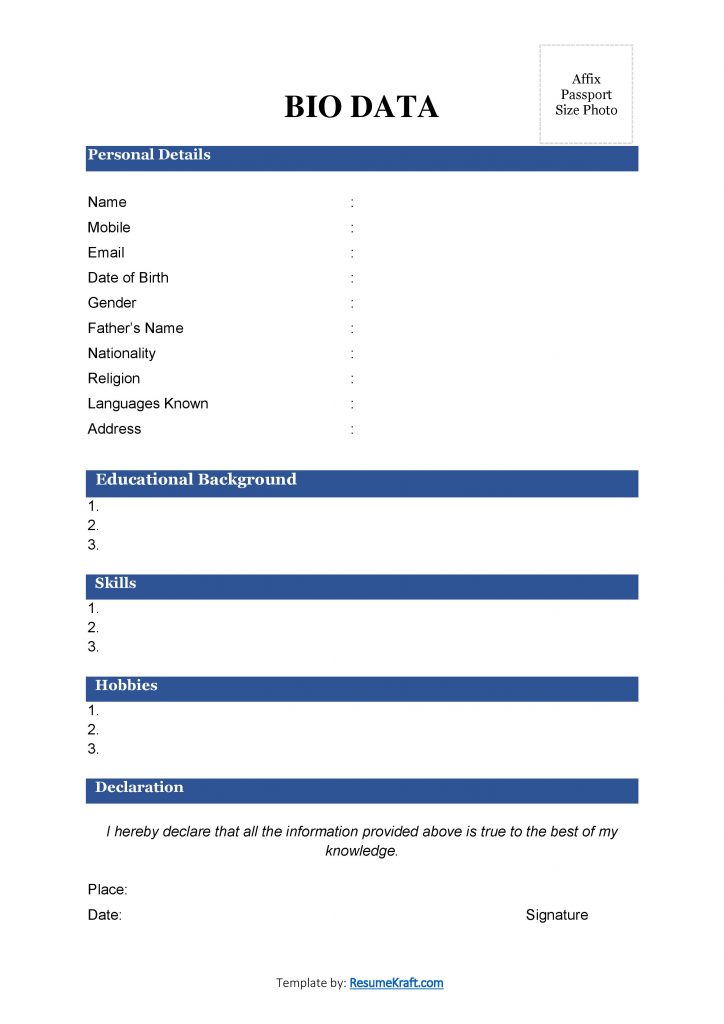
Sample Biodata for Freshers
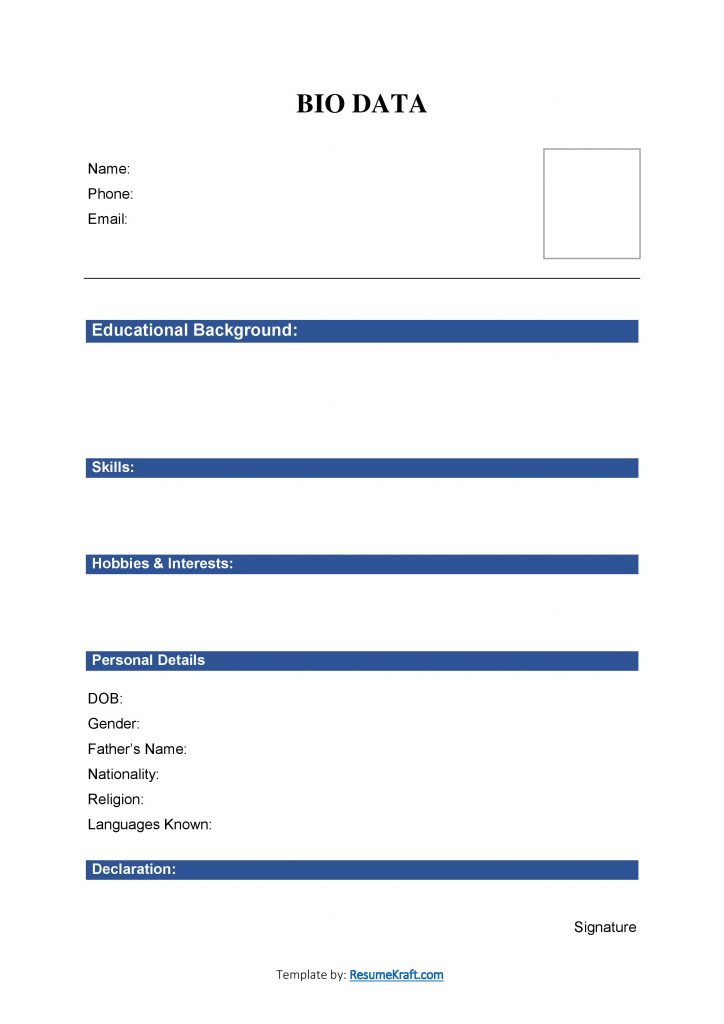
Simple Biodata Format for Job Fresher
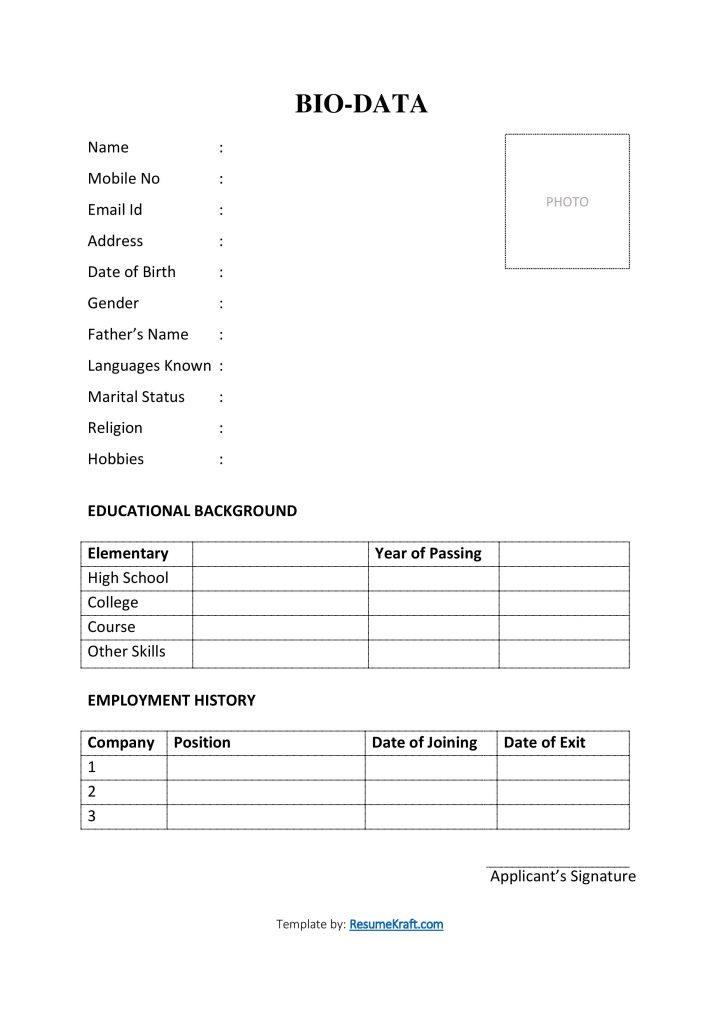
Biodata Format in Word Free Download
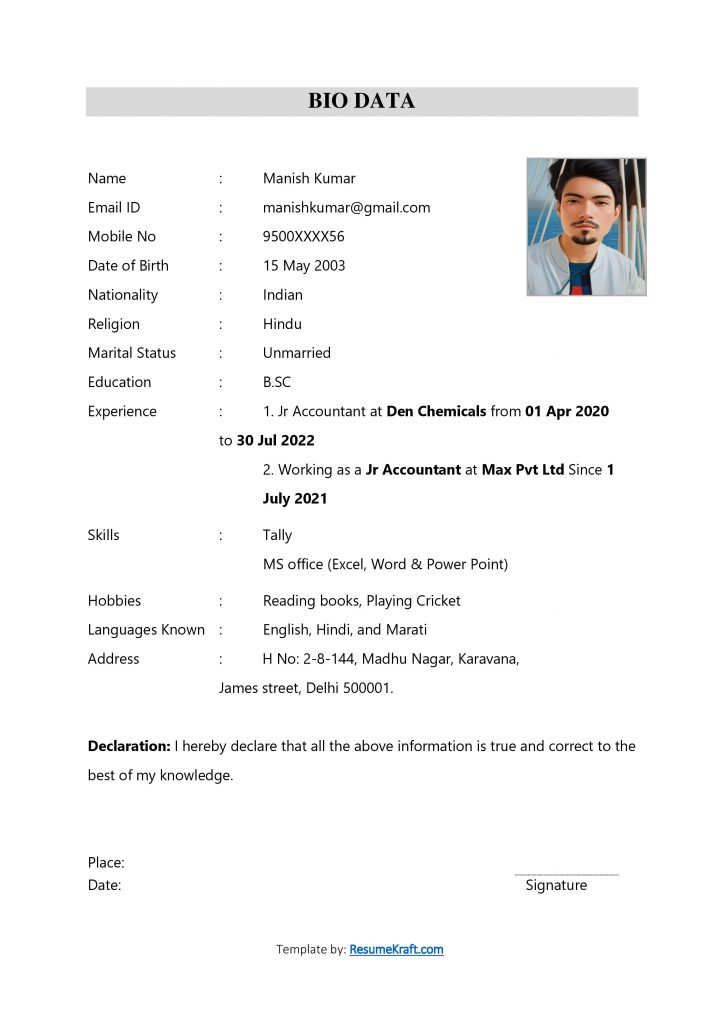
Simple Biodata Format in Text Word Free Download
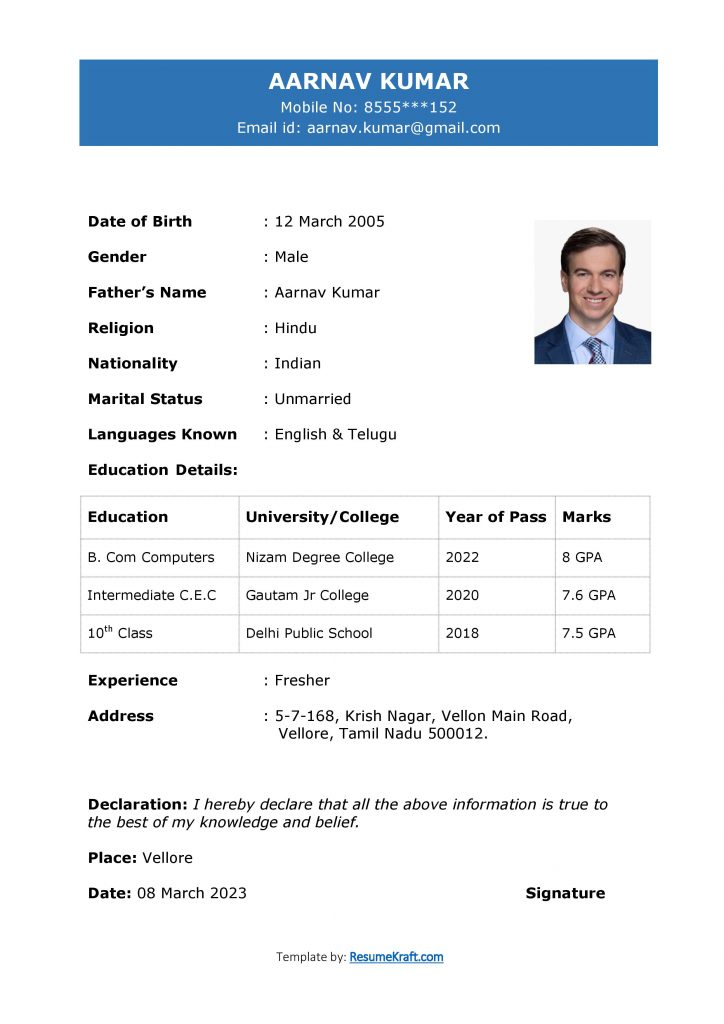
Why is Biodata Important in Job Applications?
Biodata plays a crucial role in the job application process. It serves as a quick reference for employers, allowing them to swiftly assess whether a candidate might be a good fit for a position based on their background and experience.
In many cases, employers receive a large number of applications for a single job posting. Reviewing each application in detail can be time-consuming. Biodata, with its concise and straightforward format, makes the initial screening process more efficient. Employers can quickly scan the biodata to determine if the candidate’s qualifications and experience align with the job requirements.
Moreover, biodata is particularly useful when applying for jobs that require specific qualifications or experience. By clearly listing these details in the biodata, candidates can highlight their suitability for the job.
Check our Free resume builder now.
Guide to Preparing Good Biodata for Job
Creating an effective biodata format is a crucial step in the job application process. It can significantly influence the first impression you make on potential employers. Here’s a detailed guide on how to prepare a biodata format that stands out.
How to Prepare Job Biodata Using MS Word or Google Docs
Both MS Word and Google Docs are powerful tools that can be used to create professional-looking biodata formats. They offer a variety of features and functionalities that can help you design and format your biodata.
To create a biodata format in MS Word or Google Docs, follow these steps:
- Start with a Blank Document: Open MS Word or Google Docs and start with a blank document. This gives you the freedom to design and format your biodata according to your preferences.
- Add Sections: Divide your biodata into different sections such as Personal Details, Educational Qualifications, and Work Experience. This helps organize your information and makes it easier for employers to find what they’re looking for.
- Use Bullets or Numbering: For lists of items, such as your skills or job responsibilities, use bullets or numbering. This improves readability and makes your biodata look more organized.
- Format Text: Use the text formatting tools to enhance the appearance of your biodata. You can bold or italicize text, change the font size and style, and adjust the line spacing.
- Save and Review: Once you’ve added all your information and formatted your biodata, save it and review it for any errors or improvements.
Tips to Make a Good Biodata
Creating a good biodata format involves more than just listing your personal details, qualifications, and experience. It requires careful consideration of what to include, how to present it, and how to format it.
Here are some tips to help you create a biodata format that makes a strong impression:
- Simplicity is Key: A biodata format should be simple and straightforward. Avoid unnecessary details and focus on the most relevant information. Remember, the purpose of a biodata is to provide a quick overview of your qualifications and experience.
- Limit to One Page: Try to keep your biodata to a single page. This makes it easier for employers to review your details. If you have a lot of information to include, consider creating a resume or CV instead.
- Use Professional Fonts: Stick to professional fonts like Arial, Helvetica, Georgia, Segoe Ui, and Times New Roman. These fonts are easy to read and give your biodata a professional look.
- Include Contact Details: Always include your contact details, such as your mobile number and email id. This ensures that employers can easily reach you if they’re interested in your application.
Bio Data Maker
If you are looking for an easy and efficient way to create your biodata? Our Bio Data Maker is the perfect solution. With our user-friendly resume builder, you can quickly and effortlessly generate a professional-looking biodata format in just a few clicks.
Access our Bio Data Maker tool. Simply input your personal details, educational qualifications, and work experience, and our tool will generate a customized biodata format for you. You can even choose from a variety of templates and layouts to suit your preferences.
Save time and effort by using our Bio Data Maker to create a standout biodata format that will impress potential employers. Visit bio data builder today and start building your biodata with ease!
Difference Between Biodata, Resume, and CV
While biodata, resume, and CV are all documents used in job applications, they serve different purposes and are used in different contexts. Understanding these differences can help you decide which document to use when applying for jobs.
| Biodata | Resume | CV (Curriculum Vitae) | |
|---|---|---|---|
| Definition | A concise document that provides a snapshot of an individual’s basic personal details, educational qualifications, and work experience. | A more detailed document that provides a comprehensive overview of an individual’s skills, qualifications, and work experience. | A detailed document that includes not only an individual’s education and work experience, but also their research, publications, presentations, awards, and other academic achievements. |
| Length | Typically one page. | Typically one to two pages, but can be longer depending on the individual’s experience. | Can be multiple pages, depending on the individual’s academic achievements and experience. |
| Purpose | Used for entry-level jobs or when a simple overview of qualifications is sufficient. | Used for most job applications, especially those that require specific skills or experience. | Used when applying for academic, research, or high-level positions. |
| Content | Includes basic personal details, educational qualifications, and work experience. | Includes a summary of qualifications, skills, work experience, and education. | Includes detailed information about education, research, publications, awards, presentations, and other academic achievements. |
| Layout | Simple and straightforward layout. | Can be more creative and personalized, depending on the job and industry. | Typically follows a standard academic layout. |
Related Articles:
How to Write a Resume
What is a Functional Resume?
Best Resume Formats
Frequently Asked Question and Answer
There is no fixed format for biodata. However, it should be simple, concise, and easy to read. It typically includes sections for personal details, educational qualifications, and work experience. The layout can be adjusted according to personal preference, but it’s important to ensure that the information is organized and easy to understand.
Ideally, your biodata should fit on one page. This is because biodata is meant to provide a quick snapshot of your qualifications and experience. If you have a lot of information to include, you might want to consider creating a resume or CV instead, as these documents can be longer and provide more detailed information.
Yes, you can send a biodata instead of a resume, especially for entry-level jobs or jobs that don’t require specific skills or experience. However, for jobs that require a detailed overview of your skills and experience, a resume may be more appropriate.
It depends on the job and your level of experience. Biodata is a summary of your basic details and is typically used for entry-level jobs or when a simple overview of your qualifications is sufficient. A resume, on the other hand, provides a detailed overview of your skills and experience and is typically used for most job applications, especially those that require specific skills or experience.
Your biodata should include your basic personal details (like your name, date of birth, and contact information), your educational qualifications (including the degrees you’ve obtained and the institutions you’ve attended), and your work experience (including job titles, company names, and a brief description of your roles and responsibilities).
A resume is a brief summary of your skills, qualifications, and work experience, typically not exceeding two pages. A CV, or Curriculum Vitae, is a more detailed document that includes not only your education and work experience, but also your research, publications, presentations, awards, and other academic achievements. A CV is typically used when applying for academic, research, or high-level positions.
You should use a CV instead of a resume when you’re applying for academic, research, or high-level positions that require a detailed overview of your academic achievements and experience. A CV is also commonly used when applying for positions internationally, as it’s the preferred document in many countries outside of the United States.

Build your resume in 5 minutes
Our resume builder is easy to use and will help you create a resume that is ATS-friendly and will stand out from the crowd.
Recommended Reading:

